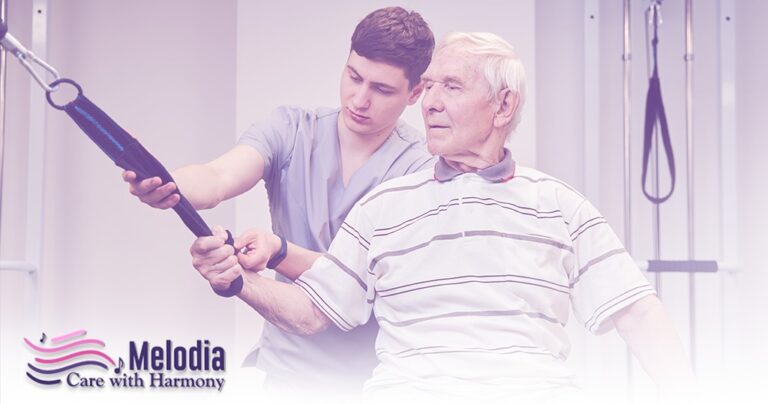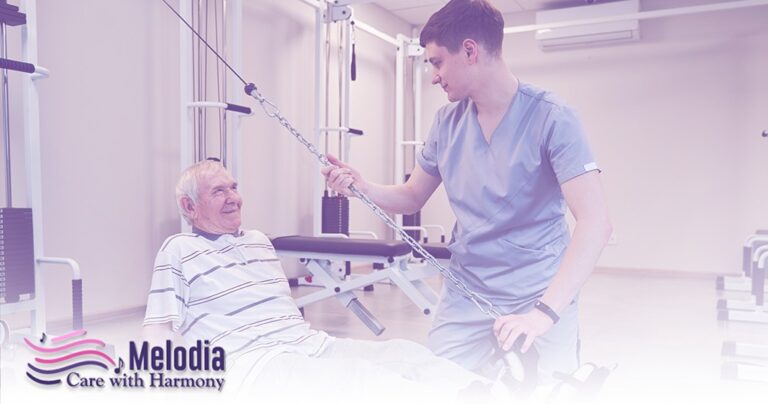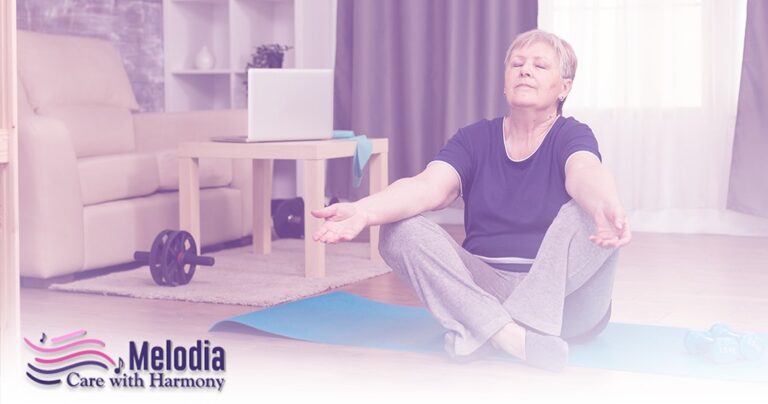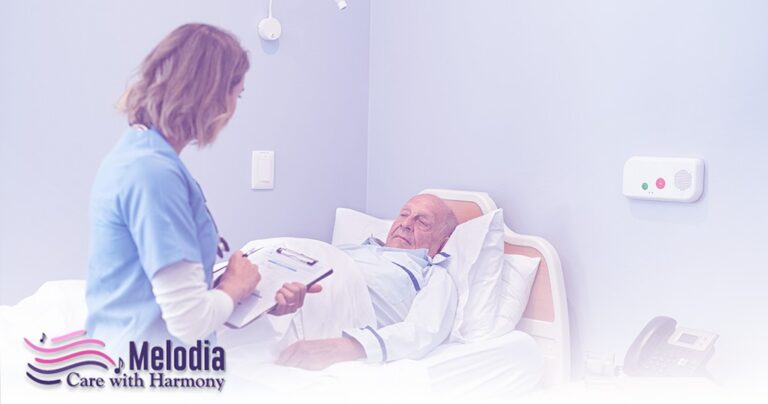Hospice Physical Therapy In Walnut Creek City, California
Hospice care aims to improve a terminally ill person’s quality of life when all medical options have been explored. These patients typically have a life expectancy of six months or fewer and the hospice program can compassionately assist them in coming to grips with their mortality. It is intended to be a soothing, compassionate atmosphere for patients who have had extensive medical therapy and whose treatment team has ruled out a cure for their illness, as well as the possibility of living peacefully.
Physical Therapy For Hospice Patients
Physical therapy for hospice patients is becoming more popular, as it can improve the patient’s functional ability and make it simpler for them to move safely in their surroundings. Unlike physical therapy for people in their prime, hospice physical therapy focuses on providing comfort for patients who are nearing the end of their lives. Physical therapy can help hospice patients in a variety of ways, including offering therapeutic measures like heat, cold or massage. Physical therapy can also help with pain management and overall comfort. Melodia Care has professionals who can help you with such things.
When you are forced to stop doing physical exercise due to an injury or bodily trauma, it can have a range of negative effects on your health. Physical therapy primarily aids in the prevention of cardiovascular disease by performing stretch and strengthening exercises that assist patients in regaining strength and coordination so that they can return to physical activity. Even minor impediments to physical exercise can have a detrimental effect on heart health and eventually lead to cardiovascular disease. According to the World Health Organization (WHO), substantial health advantages can be obtained by engaging in moderate-intensity 150 minutes of physical activity each week which is recommended or vigorous-intensity physical activity for at least 75 minutes per week.
Physical therapists collaborate with hospice personnel such as physicians, nurses, social workers, psychotherapists and trained volunteers in a multidisciplinary setting. The physical therapist must be a team player who possesses not just advanced clinical skills but also good communication abilities in order to encourage team collaboration. They must be sensitive and sympathetic as well as explicit about their function on the patient’s treatment team throughout the last months of their lives.
Physical therapists play various roles in hospice care, including:
- Management of pain.
- Bedsores can be avoided by repositioning.
- Breathing and digestion are aided.
- Techniques for conserving energy.
- Exercising for therapeutic purposes.
- Any edemas will be managed.
- Equipment suggestions are provided.
- Modifications to the home
As a hospice patient’s condition deteriorates, their demands will change. A hospice physical therapist may, for example, need to aid an unsteady patient in learning to walk with a cane and training family members how to assist with patient’s balance. Later on, the patient may require a walker, followed by a wheelchair or a bed. As the patient’s health deteriorates, the physical therapist must console them and give pain treatment with the decency and respect they deserve.
You may have been sent to a physical therapist if you have recently suffered from an injury and need to improve your body’s function. Physical therapists are frequently consulted by patients in order to assist them minimize pain, prevent invasive surgery, increase mobility and speed up their recovery from strokes. A physical therapist will work with you to understand your current condition and develop a treatment plan that will help you regain range of motion and strengthen your body.
Physical therapists have equipment in their offices that might help you get the most out of your workout. Bikes, treadmills and ultrasound technologies are among the equipment available. Massages, soft-tissue mobilization, joint mobilization and muscular energy treatments are among manual procedures that your physical therapist can use. An at-home exercise regimen, on the other hand, is a vital aspect of a physical therapy strategy. The ability to undertake physical therapy exercises at home has become even more vital especially with COVID-19 pandemic. The types of workouts you should practice at home will vary depending on the injuries you’re trying to cure and your personal fitness objectives. Here are some of the most common at-home physical therapy treatment areas, along with some suggestions for how to accomplish them on your own:
Stretching

This is by far one of the most straightforward methods to incorporate physical therapy skills into your daily routine. Stretching not only relieves pain but it also improves muscular contraction efficiency and releases imprisoned nerves. The following are some of the best stretches you can do at home:
- Stretch your hamstrings.
- Hip flexor in the standing position.
- Stretch the piriformis.
- Stretching in the corners.
- Stretched child’s stance with modifications.
- Stretching throughout the body.
- Stretch your calf muscles.
- Stretch the levator scapulae muscle.
- Stretching with a bow and arrow
- Stretchy pillowcases
Resistance Training

Patients are prioritizing workouts that improve their strength and endurance even at home. Strength training is proven to lessen musculoskeletal pain, so this is good news. What’s more, there are numerous resistance training routines that can be done in the privacy of your own home. Feel free to utilize your own body weight as a type of resistance if you don’t have access to free weights, weight machines or resistance bands at home. Your own body can be a very effective means of getting your muscles to work against a weight. Some at-home resistance training exercises that don’t require equipment that you can do with the help of a physical therapist are:
- Squats with your own weight.
- Plank on the side.
- Push-up.
- Bridge between the glutes.
- Swimming in the air.
- Triceps dip on one leg.
- Punch like Superman.
- Crunches with a rope climb
- To decline push-up, do a Bulgarian split squat.
- With a single leg raise, do a plank.
- The crunch of a runner.
- Ski jumps using only one’s own weight.
Core Stability Training

Your core muscles are essential for supporting your body’s daily routine activities. Having a strong core will help you avoid injuries, protect your inner organs and central nervous system, reduce back and neck problems and maintain a good posture. Weaker core muscles have been linked to increased fatigue, lower endurance and injury. Despite the necessity of having a strong core, it is also critical not to over-exert your core. A physical therapist can assist you in developing a tailored strengthening program that includes exercises that will benefit you. The following are some common at-home cores strengthening exercises:
- Tap the plank.
- Stomach Crunch.
- Bicycle Crunch.
- Leg Raises.
- Leg press on a table.
- Exercise on the bridge.
- C-curve.
- Panther shoulder tap.
- Rock with a hollow body.
Is Physical Therapy Effective In Making You Stronger?

If you’re wondering whether physical therapy could be the cure to your muscle weakness and incapacity to exercise, the answer is yes! A physical therapist can offer a variety of exercises to help you and your heart get stronger. A physical therapist’s primary goal is to help you rebuild your strength and become active again, so if you’ve been having trouble in these areas, strength and conditioning therapy at Melodia Care could help. Patients choose this type of physical therapy to assist them achieve their fitness objectives or to correct a physical ailment that has been bothering them. There are a variety of reasons why people seek physical therapy but many of the patients we meet have musculoskeletal difficulties with their muscles, ligaments, tendons or bones. However, it’s crucial to keep in mind that physical therapy isn’t for everyone. If you’re experiencing sharp pains that get worse with activity, we’ll need to take some extra steps before you can start our strength and conditioning program. If physical therapy is the best option for you, we’ll design a personalized workout plan for you that includes a mix of exercises, hands-on therapies and exercises. The following are some of the ways that this customized approach can help you become healthier and stronger:
Receiving The Accurate Diagnosis In Order To Fully Comprehend The Situation

According to the Centers for Disease Control and Prevention (CDC), adults suffer from chronic pain, with suffering from high-impact chronic pain. Unfortunately, too many adults ignore this problem because they don’t understand what’s wrong or believe they don’t have the authority to correct it. You can get a diagnosis for your discomfort at the physical therapist’s office, which is a great first step on the road to recovery.
Receiving An Individualized Treatment Plan

Because no two injuries or body pains are the same, no two treatment procedures should be the same. Even if you employ the same procedure as someone else who had a similar problem, you could wind up with a greater harm if you try to handle the problem on your own. We recognize that each patient has a unique medical history, physical capabilities and personal goals, so we’ll take all of that into consideration while creating your treatment plan.
Advising On How To Live A Healthy Lifestyle

When patients visit a physical therapist or adhere to our treatment plans, they tend to become more aware of their health. Physical therapy promotes wellness and encourages proper activity, which accounts for a big part of this. You’ll be more likely to be proactive about your health in other areas once you start taking active measures that feel fantastic for your body.
Physical Therapy Helps To Keep Harmful Symptoms From Getting Worse

Physical therapy can not only prevent your symptoms from worsening but it can also stop them in their tracks. The condition or injury you’re dealing with is likely to worsen if you don’t give it the attention it requires. Along with other physical therapy treatments, the strength and conditioning you receive will maintain your body strong, your heart healthy and prevent you from enduring unneeded pain.
Call Melodia Care Hospice at 1-888 635-6347 (MELODI-7) or send us an email to learn more about the benefits of physical therapy and how our treatments can help you.
